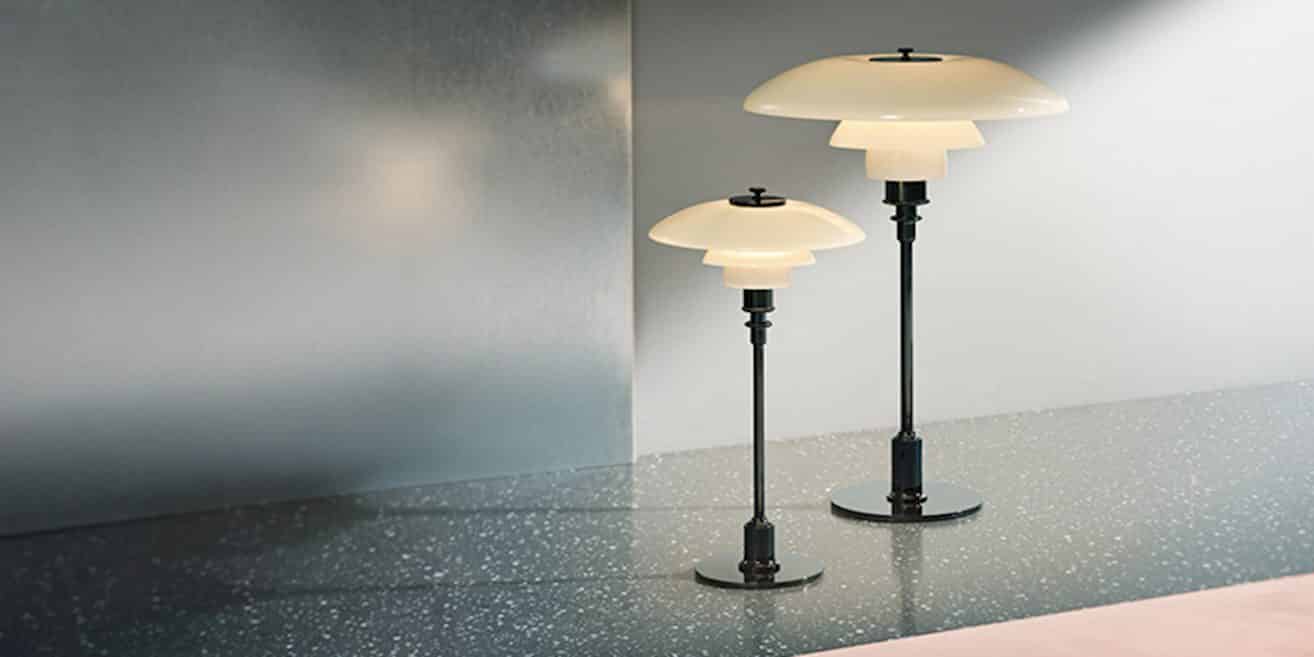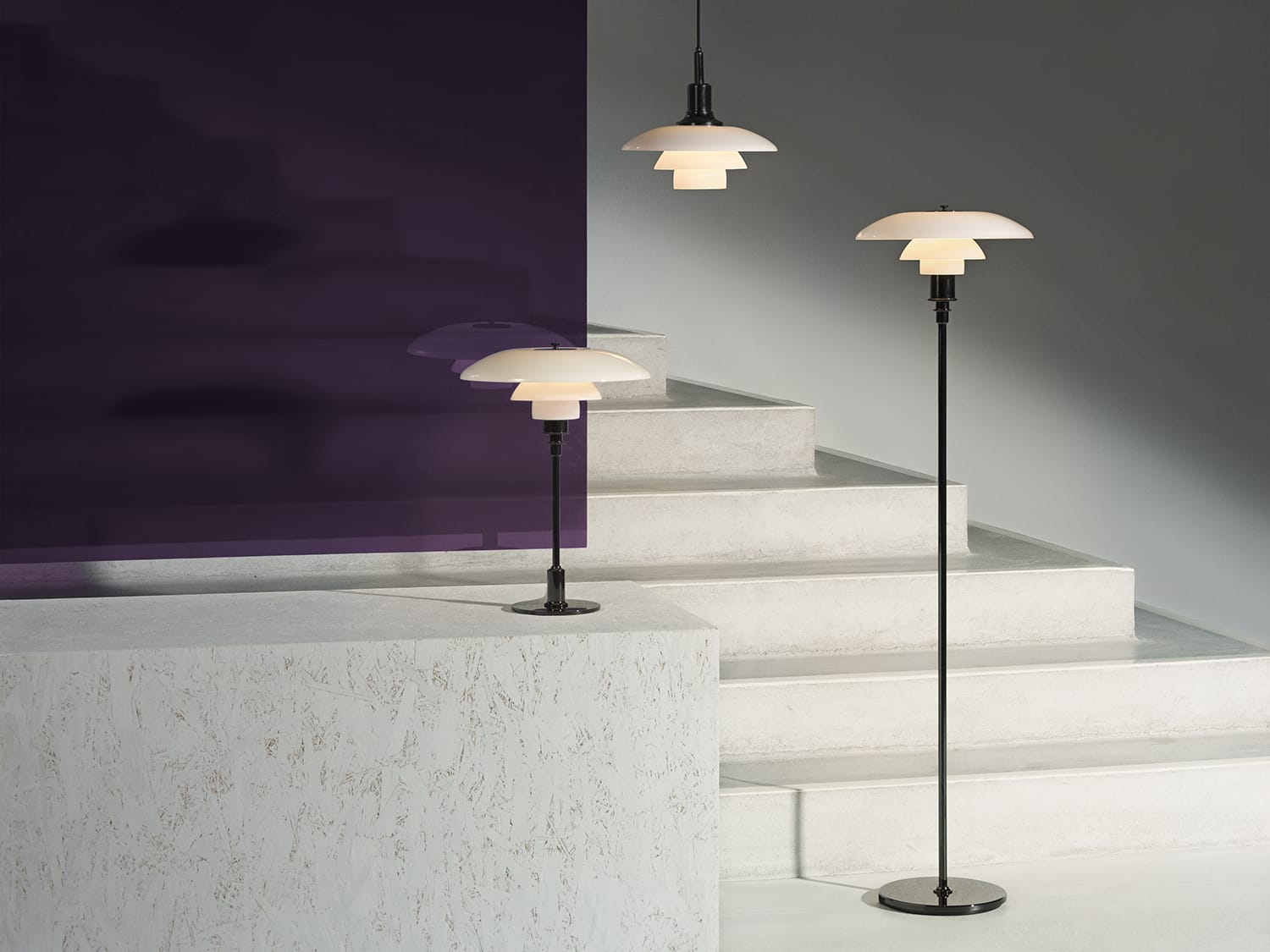Louis Poulsen revamps the PH glass lamp with new metal frames
Louis Poulsen introduces seven new chrome and black metallised designs to the PH glass family. The extensions include both new PH 2/1 and PH 3½-2½ lamps with white opal glass and a chrome or black metallised frame. The industrial look of the dark metallised surface offers a bold, understated look. The mouth-blown white opal glass shades soften the overall look of the lamp and illuminate its surroundings with a perfect, harmonious and glare-free light that only the classic three-shade system is capable of emitting. The shades are mouth-blown three-layer opal glass, which is glossy on top and sandblasted matt underneath to provide soft and uniform light distribution.
PH 2/1 was introduced in 1926. The PH model numbers refer to the shade size. Each top shade has a corresponding set of middle and lower shades. In the original models, such as the 2/2, the top shade had a width of about 20 cm, with corresponding lower shades. The PH 2/1 consists of a top shade measuring approximately 20 cm, but uses lower shades from the 1/1 model to give it a dynamic outline. PH 3½-2½ was designed in 1928 and is one of many advanced projects undertaken by Poul Henningsen in the development of his world-famous three-shade system. Poul Henningsen devoted most of his life to taming electric light. He based his three-shade design on a logarithmic spiral to make optimum use of the light source. He was constantly doing calculations and tests. The form of the shades was determined by the way they were required to shape and reflect the light, and the lamp was designed to be glare-free.
Louis Poulsen put the three-shade lamp into production and is now promoting PH’s new mind-set of creating designs to shape light – glare-free light to make both homes and people more beautiful.
The seven new editions to the chrome and black metallised PH family will be available from February 2017.
About Poul Henningsen
Poul Henningsen (1894-1967) was born in Copenhagen to the famous Danish authoress Agnes Henningsen. He never completed his degree in Architecture, but studied at Copenhagen Technical College in Frederiksberg from 1911-1914 and then for three years at the Technical University in Copenhagen.
Poul Henningsen originally practised traditional functionalist architecture, but over the years, he began to focus mainly on lighting. His lighting designs have also left the greatest mark on posterity and made him world-famous. In addition to being a designer, he began to write and became a journalist and writer known for his radical opinions. He was an architect in Tivoli in Copenhagen for a period at the start of World War II. However, like so many other creative personalities, he had to flee Denmark to Sweden during the German occupation and soon be-came an important part of the Danish colony of architects and artists in Stock-holm.
His lifelong partnership with Louis Poulsen began back in 1924. PH’s pioneering ideas in the field of lighting theory – on structure, shadow, glare and colour re-production – are still being practised at Louis Poulsen today.
About Louis Poulsen
Louis Poulsen is a Danish lighting manufacturer, founded in 1874. Through close working relationships with designers and architects such as Poul Henningsen, Arne Jacobsen, Verner Panton, Vilhelm Lauritzen, Øivind Slaatto, nendo (Oki Sato), Shoichi Uchiyama and Louise Campbell, Louis Poulsen has established itself as one of the key suppliers of architectural lighting in the world market. The company supplies a range of lighting designed for both the professional and home lighting markets.
There is a story behind every Louis Poulsen product. These are products whose designers focus on light itself, on the idea behind the product as well as on the refinement of an architect’s, light designer’s or furnishing designer’s ideas and visions about light – all in harmony with Louis Poulsen’s own philosophy, design to shape light.
For additional information, contact Louis Poulsen at: info@louispoulsen.dk



